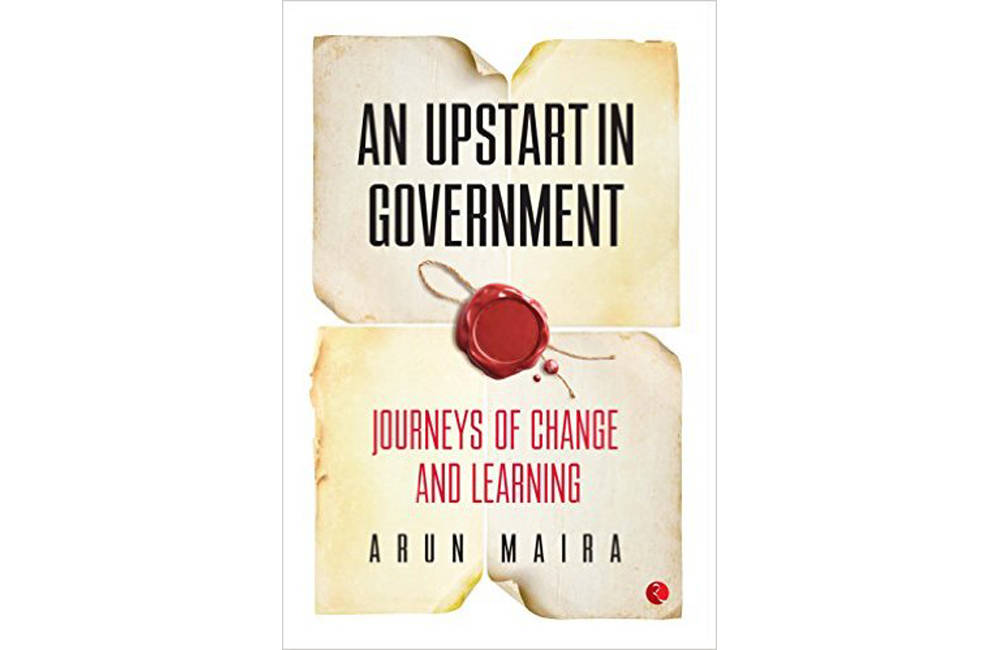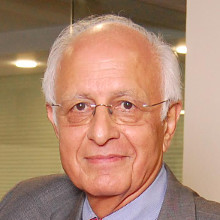[The following excerpts from 'An Upstart in Government: Journeys of Change and Learnings
SHAPING THE FUTURE
By the turn of the millennium, India’s GDP growth had begun to accelerate. Economists were projecting that India would become one of the world’s three giant economies, along with China and the US, by 2040. Indian business people, economists, and policymakers were in a celebratory mood.
India was shining. The future was ours.
However, some people were sceptical. They pointed out that economists’ projections have an awful track record because they do not factor into their models the social and political forces that can change the trajectory of their economic extrapolations. They pointed out that in the early 1980s economists were comparing the US and the Soviet Union as the two largest economic blocs, and economists were expecting Japan to be the powerful economy of the 21st century—they even talked of a Japanese century. China did not even figure in their projections then. Yet, within fifteen years, the picture changed dramatically. There was no Soviet Union and Japan was in the doldrums. Instead China was the emergent power of the twenty-first century! So, how could one be sure of India’s future trajectory? Did economists really understand what was going on within India, including the socio-political forces which would influence India’s future?
The World Economic Forum (WEF) undertook to apply the techniques of scenario planning in 2005 to examine the futureof the BRICs countries—China, Brazil, Russia, and India. The forum’s scenarists asked me to help them develop scenarios for India.
Three scenarios, once again, of India’s future
The analysis revealed three plausible scenarios of India. They can be described under the headings ‘Muddling Along’, ‘Falling Apart’, and ‘The Flotilla Advances’. These scenarios result from different configurations of the three ‘theories-inuse’—the three levers mentioned before.
Each scenario is an explanation of what the condition of the country will be if the forces that affect it play out, or are caused to play out, in one way rather than another. The National Council of Applied Economic Research (NCAER) was commissioned to create a macroeconomic model and project the quantitative outcomes of the scenarios.
Scenario 1: The Flotilla Advances
This is an optimistic scenario under the assumption that the government would successfully drive key structural policy reforms and their effective implementation. Decentralization and good governance policies will improve the efficiency of the public delivery system and address the supply side bottlenecks. Under a positive policy environment, the investment climate would also be positive, with significant net capital inflows and healthy growth in private investment, both being drivers of economic growth.
Under this scenario, the government is able to meet its medium-term fiscal goals, with the deficit coming down to around 3.6 per cent of GDP by 2015–16 from the current level of 5 per cent of GDP.
The overall GDP at constant 2004–5 prices is projected to grow by an average of 7.8 per cent during the Twelfth Plan period (reaching 9.3 per cent by 2016–17). Across the production sectors, the services sector is expected to register higher growth of 9 per cent followed by the industry sector at around 7.1 per cent and the agriculture sector at 3.3 per cent.
Scenario 2: Muddling Along
Under this scenario, India would initiate some reform measures to encourage investment. However, the business environment continues to remain weak as the reforms may cover only a narrow set of issues. Net invisible receipts and foreign direct investment (FDI) inflows will remain weak due to domestic policy uncertainty. The stock market (BSE Sensex) will continue to show poor returns in this scenario and there will be more pressure on the rupee to depreciate against the US dollar. Both central and state governments will miss the opportunities to control unproductive expenditure.
The overall GDP growth is estimated at 6.0 per cent per year for the Twelfth Plan period, a decline of 1.8 percentage points over the Flotilla Advances scenario. The decline in GDP growth has occurred in the services and industry sectors due to the decline of private investment in these non-agriculture sectors. There is also less impact on poverty reduction as the growth effects are smaller.
Scenario 3: Falling Apart
This is the most pessimistic scenario among the three, both in terms of economic performance and policy environment. This scenario reflects a situation where the government would be unable to undertake key policy reforms. Subsidy levels are not stabilized. The policy logjam, especially relating to investments, witnessed in the latter part of the Eleventh Five Year Plan would continue. The tax revenue growth will remain weak with the implementation of key tax policy reforms, such as Direct Taxes Code (DTC) and Goods and Services Tax (GST), being delayed further.
The allocation of resources in the health and education sectors would decline as a ratio to GDP from the current levels due to resource constraints. The public sector investment both in agriculture and non-agriculture sectors would decline substantially as compared to the pre-crisis level.
In this scenario, the overall annual GDP growth for the Twelfth Plan period was estimated at 4.8 per cent, a decline of 3 percentage points over the Flotilla Advances scenario. The GDP growth rate declines across all the sectors because of a significant fall in investment (both private and public) and a rising fiscal deficit.
It took almost a year from the time the scenarios were made for NCAER to complete its modelling and calculating. During this time, the conditions in the country were slipping from those described in the Muddling Along scenario, which is where the country’s governance seemed to be when the scenario process commenced, to those in the Falling Apart scenario. GDP growth rates were already slipping below 5 per cent, down to the levels NCAER calculated for the Falling Apart scenario.
Governance, Implementation, Total Productivity
The most significant number amongst NCAER’s computations was the substantial difference, of around 3 per cent per annum, in the rate of growth between the Flotilla Advances and Falling Apart scenarios. This difference arises due to internal governance matters, not external conditions which are the same for both scenarios. (The Muddling Along scenario, also with the same external conditions, is in between the two.) This 3 per cent difference is the result of reduction (or improvement) in the ‘total productivity’ of the economy by changes in effectiveness of resource use. To improve total productivity, resources should be directed towards desired outcomes and there should be less waste too in their use. Devolution of responsibilities for planning and implementation to lower levels of the system—in the states, and in local urban and village management bodies, and building capacities at these levels for good planning and management, are a large opportunity to obtain total productivity improvement of the Indian economy. The country must tap these sources of human and institutional energy much more vigorously for faster as well as more inclusive growth.
These three scenarios along with their explanations, with the images of boats, buffaloes, and fireflies, were published by the Planning Commission on its website. I reproduce a picture that was published. In this picture there is also an image of a key. The key indicates the levers for change—the ‘theories-in-use’ for governance that must be altered—to enable the desired scenario to emerge: the one with the flotilla advancing and fireflies arising.
Three of the levers on this key have been explained already. There is also a fourth lever, a very critical one, which will be explained in Part 3.



